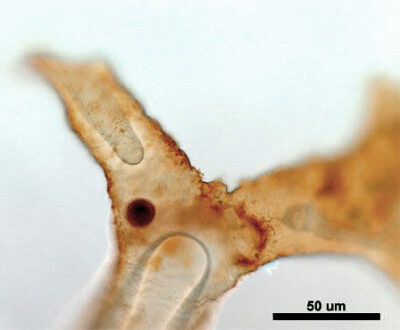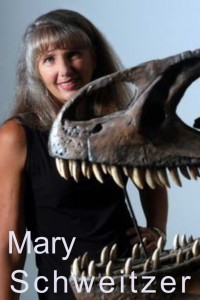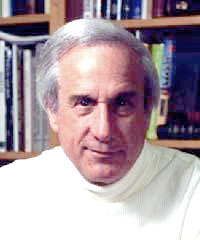 Leslie Stahl, long-time CBS journalist, interviewed on 60 Minutes with Mary Schweitzer in December, marking a new paleontology arena – the field of dinosaur soft tissue.
Leslie Stahl, long-time CBS journalist, interviewed on 60 Minutes with Mary Schweitzer in December, marking a new paleontology arena – the field of dinosaur soft tissue.
Schweitzer, an American paleontologist at North Carolina State University, unexpectedly discovered soft tissues from a Tyrannosaurus rex bone sent from the Museum of the Rockies in Montana.
Schweitzer’s controversial report, “Gender-Specific Reproductive Tissue in Ratites and Tyrannosaurus rex,” published in the journal Science in 2005, revolutionized our understanding of fossil preservation.
Schweitzer identified proteinaceous soft tissues in a 68-million-year-old dinosaur femur, which were once thought to decompose within weeks.
While the purpose of Schweitzer’s study initially centered on investigating evolutionary relationships between ratites (non-flying birds, like ostriches) and dinosaurs, scientists quickly changed focus to the unlikely “excellent preservation” of soft tissues.
Dinosaur soft tissues, now seemingly lasting millions of years, challenged the current understanding of fossil record dating practices and protein preservation.
Dinosaur Soft Tissue Preservation
Schweitzer is now credited as the first ever to isolate soft tissue from an ancient fossilized bone. In a Montana State University News Service interview in 2005, Schweitzer (pictured right) expressed her surprise, too –
“I am quite aware that according to conventional wisdom and models of fossilization, these structures aren’t supposed to be there, but there they are… I was pretty shocked.”
On 60 Minutes, museum paleontologist Jack Horner explained the significance of the findings –
“I see this as a really important discovery that will change our methods of collecting and studying. We can truly begin asking biomolecular questions. The discovery also means that our preconceived ideas about preservation were wrong.”
Dinosaur Soft Tissue Transitions
Upon examination, as anticipated, dinosaurs and birds showed similarities in reproductive tissue. According to Schweitzer, the location, origin, morphology, and microstructure of T. rex tissues are similar to those found in the ratites. These study findings align with Charles Darwin‘s argument in The Origin of Species –
“Even the wide interval between birds and reptiles has been shown by [Huxley] to be partially bridged over in the most unexpected manner, by the ostrich and extinct Archaeopteryx.”
 One hundred years later, in 1961, in the book Historical Geology, Carl Dunbar declared the Archaeopteryx as “cogent proof” of the reptilian ancestry of birds. Darwin’s argument continued to gain validity. As paleontologist Pat Shipman explained –
One hundred years later, in 1961, in the book Historical Geology, Carl Dunbar declared the Archaeopteryx as “cogent proof” of the reptilian ancestry of birds. Darwin’s argument continued to gain validity. As paleontologist Pat Shipman explained –
“[The Archaeopteryx is] more than the world’s most beautiful fossil … [it is] an icon—a holy relic of the past that has become a powerful symbol of the evolutionary process itself. It is the First Bird.”
On 60 Minutes, after interviewing Horner, Schweitzer, and evolution scientist Sean Carroll (pictured left) of the University of Wisconsin, Lesley Stahl expressed her impression –
“Dinosaur-bird connection is largely settled now.”
Soft Tissue Homology
Homology, a common term in the field of evolution, implies that observed similarities originate from a common ancestor. Similarities may be anatomical, cellular, physiological, or molecular. Since Schweitzer’s study found tissue similarities between the dinosaur and avian (bird) soft tissues in bone –
“We hypothesize, [then], that these tissues are homologous to specialized avian tissues known as medullary bone.”
Observed tissue homology, then, implies the compared species originated from a common ancestor. What Lesley Stahl of 60 Minutes may not have realized, however, is that the assertion of homology was inferential, not objective scientific evidence. As the team reported –
“Finally, the robustly supported relationship between theropods [dinosaurs] and extant birds permits the application of phylogenetic inference to support the identification of these tissues.”
Inferred evidence, however, cannot scientifically validate a theory, like evolution, since inferences are not testable or falsifiable. Schweitzer did not perform any dinosaur soft tissue fallibility tests, a ubiquitous practice in the field of evolution research.
Dinosaur to Bird Critics
With or without the dinosaur soft tissue story on 60 Minutes, the evolution of dinosaurs into birds through natural selection has a long history of scientific criticism. During the latter half of the twentieth century, paleontologists increasingly challenged the assumption. Issues with the Archaeopteryx feather emerged as the final tipping point.
Reptilian scales transforming into feathers is storytelling, not science. In the words of Barbara Stahl in Vertebrate History: Problems in Evolution (1974) –
“How [birds] arose initially, presumably from reptile scales, defies analysis.”
Alan Feduccia and colleagues, writing in the journal Science in 1979, in the paper entitled “Feathers of the Archaeopteryx: Asymmetric Vanes Indicate Aerodynamic Function,” noted that the Archaeopteryx feather was  “essentially like those of modern birds” and not a transitional feather, as once alleged.
“essentially like those of modern birds” and not a transitional feather, as once alleged.
At the International Archaeopteryx Conference in 1985, Peter Dodson published his conclusion in the Journal of Vertebrate Paleontology –
“The general credo runs as follows: Archaeopteryx was a bird that could fly.”
Darwin’s dilemma intensifies.
Genesis
 While the probability of scientifically validating any dinosaur-to-bird transitional link theory seems increasingly improbable, the available evidence is compatible with the Genesis account written by Moses.
While the probability of scientifically validating any dinosaur-to-bird transitional link theory seems increasingly improbable, the available evidence is compatible with the Genesis account written by Moses.
Galileo Galilei, Italian astronomer, physicist, engineer, philosopher, and mathematician, recognized as the “father of observational astronomy” and the “father of modern physics,” understood the origins of the universe during the Scientific Revolution –
“Mathematics is the language in which God has written the universe.”
Evidence for common ancestry and transitional links underscores why the theory of evolution remains speculative but not scientifically valid.
Dinosaur Soft Tissue on 60 Minutes is a Fossil Record article.
Darwin Then and Now is an educational resource on the intersection of evolution and science, highlighting the ongoing challenges to the theory of evolution.
Move On
Explore how to understand twenty-first-century concepts of evolution further using the following links –
-
- The Understanding Evolution category showcases how varying historical study approaches to evolution have led to varying conclusions. Subcategories include –
- Studying Evolution explains how key evolution terms and concepts have changed since the 1958 publication of The Origin of Species.
- What is Science explains Charles Darwin’s approach to science and how modern science approaches can be applied for different investigative purposes.
- Evolution and Science feature study articles on how scientific evidence influences the current understanding of evolution.
- Theory and Consensus feature articles on the historical timelines of the theory and Natural Selection.
- The Biography of Charles Darwin category showcases relevant aspects of his life.
- The Glossary defines terms used in studying the theory of biological evolution.
- The Understanding Evolution category showcases how varying historical study approaches to evolution have led to varying conclusions. Subcategories include –
2020 Update
WIKIPEDIA, 2020
List of dinosaur specimens with preserved soft tissue
“There have been some discoveries of unusually well-preserved fossil dinosaur specimens which bear remnants of tissues and bodily structures. Such tissue usually decays too quickly to enter the fossil record, unlike more durable bones and teeth.”
Evolution 101, 2020
The website includes no mention of dinosaur soft tissues.
Smithsonian website, dated 2015
“Dinosaur Soft Tissue Recovered From Eight Cretaceous-Era Fossils, New sampling methods yielded cells and fibers from relatively ordinary fossils, broadening the possibilities for paleontology.”
“They report this week in the journal Nature Communications, it is possible to recover organic structures from fossilized specimens that are at least 75 million years old.”
Comment
Reports of soft tissue preservation have become increasingly common since Mary Schweitzer’s first report in 2005. This month, June 2020, the Smithsonian reported on two studies with dinosaur soft tissues, one discovered in Mongolia and the other in Antarctica.
Since a consensus for accurately dating fossils does not exist, the reliability of current dating methods remains in question scientifically.
New reports of soft tissue findings are re-posted on my Richard William Nelson Facebook page. Last week alone, two new soft tissue reports were published.
Evolution is a philosophy, not a valid scientific theory.


